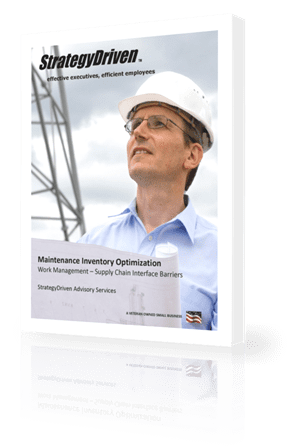How Leaders Boost Engagement With Recognition Software
Employees want more than a paycheck, they want to feel valued. Recognition software helps, but it’s leadership that makes it impactful. When leaders lead with appreciation, engagement rises. 40% of professionals say recognition drives it. In this blog, we’ll look at how leaders can turn recognition software into a powerful driver of engagement, trust, and performance.
Whether you manage a small team or lead a large organization, the right approach can shift your entire workplace culture
Leadership’s Role in Amplifying Recognition Programs
Leadership involvement is pivotal to the success of any online employee recognition program. When leaders actively participate, it sends a clear message about the organization’s values and priorities. Studies have shown that organizations with integrated recognition are four times more likely to have highly engaged employees.
Furthermore, effective recognition programs led by top management significantly impact employee morale, engagement, and performance.
Actionable Steps for Leaders:
- Personal Involvement: Regularly engage with the recognition platform to acknowledge employee achievements.
- Visibility: Make recognition efforts visible to the entire organization to set a precedent.
- Consistency: Ensure that recognition is not sporadic but a consistent practice.
When leaders consistently show up and lead by example, recognition becomes part of the company’s DNA, not just an HR initiative. To support that commitment, the right software plays a key role. Let’s look at the essential features leaders should prioritize when choosing a recognition platform.
Essential Features of Effective Recognition Software
To maximize the benefits of recognition software, leaders should ensure the platform includes the following features:
- Real-Time Recognition: Instant recognition reinforces great behavior when it happens, making employees feel appreciated and more likely to repeat those actions. It keeps motivation high and feedback timely.
- Integration Capabilities: When recognition tools work within platforms like Slack or Teams, they blend into daily routines, making it easy for leaders and teams to give shoutouts without disrupting workflows.
- Customization and Personalization: Tailored recognition aligned with company values and personal preferences feels genuine. It shows employees they’re seen as individuals, not just workers, increasing the emotional impact.
- Analytics and Reporting: Detailed reports help leaders track recognition frequency, team participation, and trends, making it easier to adjust strategies and link recognition efforts to actual business outcomes.
- Mobile Accessibility: Recognition shouldn’t be limited to the office. Mobile access lets remote, hybrid, and field teams share appreciation anytime, building a connected and inclusive culture.
When the right features are in place, recognition software becomes more than a tool, it becomes a natural extension of how teams connect, communicate, and celebrate wins. But to see lasting impact, leaders also need a thoughtful plan for rolling it out. Here’s how to implement recognition software effectively across your organization.
Best Practices for Implementing Recognition Software
Successful implementation of recognition software requires strategic planning and execution. Here are the best practices for leaders:
- Align with Organizational Values: Ensure the recognition program reflects and reinforces the company’s core values.
- Secure Executive Buy-In: Obtain support from top management to underscore the program’s importance and allocate necessary resources.
- Communicate Clearly: Articulate the purpose, benefits, and mechanics of the recognition program to all employees to drive engagement.
- Provide Training: Equip managers and employees with the knowledge to use the software effectively, ensuring meaningful recognition.
- Encourage Peer-to-Peer Recognition: Foster a culture where employees feel empowered to recognize each other’s contributions, enhancing team cohesion.
- Monitor and Adjust: Regularly review program metrics and gather feedback to make informed adjustments and improvements.
Following these best practices helps leaders roll out recognition software with purpose and clarity, setting the foundation for long-term success. Next, it’s time to measure whether these efforts are truly making a difference. Here’s how to track the real impact of your recognition program.
Measuring the Impact of Recognition Software
To assess the effectiveness of recognition initiatives, leaders should focus on key performance indicators (KPIs):
- Participation Rates: When an organization experiences high platform usage from employees, this indicates that recognition has turned into a routine part of workplace culture. Minimal employee use of the platform warrants improved leadership engagement and enhanced organizational messaging.
- Recognition Frequency: Tracking how often recognition is given helps leaders ensure it’s not just a one-time push. Consistent recognition keeps morale high and reinforces the behaviors that drive business success.
- Employee Engagement Scores: Survey results offer insight into how valued employees feel. If engagement scores rise alongside increased recognition, it shows the program is making a meaningful impact on workplace satisfaction.
- Retention Rates: Recognition can directly influence loyalty. Comparing turnover data before and after implementation helps show if employees are more likely to stay when they feel seen and appreciated.
- Performance Metrics: Look at outcomes like project completion rates, quality scores, or customer satisfaction. If recognized, employees perform better, it highlights the connection between appreciation and higher productivity.
Tracking these metrics gives leaders a clear view of what’s working and where to fine-tune so recognition efforts stay meaningful and measurable. But even the best programs can face roadblocks. Let’s look at common challenges and how to overcome them.
Overcoming Challenges in Recognition Software Adoption
Implementing recognition software can encounter obstacles. Leaders can address these challenges by:
- Addressing Resistance: Several workers consider the new software implementation either redundant or non-voluntary. Leaders could achieve this by describing the importance along with demonstrating team culture advantages and by partnering with employees throughout the implementation process. People who experience being heard tend to become more supportive of a given initiative.
- Ensuring Fairness: Recognition must be consistent and transparent. By setting clear guidelines, such as tying recognition to specific behaviors or goals, leaders can avoid bias and ensure everyone has an equal chance to be acknowledged. Fairness builds trust and strengthens team morale.
- Maintaining Engagement: Even the best tools can lose impact if they feel stale. Leaders should refresh content, spotlight new use cases, and celebrate platform wins to keep interest alive. Occasional updates or themed recognition moments can re-energize participation and make the program feel dynamic.
By tackling these challenges head-on, leaders can keep recognition efforts inclusive, consistent, and engaging well beyond the initial launch. Looking ahead, new tech is shaping how recognition works. Let’s explore the trends transforming the future of employee appreciation.
Future Trends in Employee Recognition Technology
To keep recognition meaningful in a changing workplace, leaders need to stay ahead of what’s next. Here are the key trends shaping the future of employee recognition technology.
- Artificial Intelligence (AI): AI is changing how recognition happens by analyzing employee behavior and milestones to suggest timely, personalized praise. This removes guesswork and helps leaders recognize the right actions at the right time, making recognition feel more meaningful and consistent.
- Gamification: By adding game-like features such as badges, points, and leaderboards, recognition software becomes more fun and interactive. This playful approach can boost participation, especially among competitive or younger teams, and keeps engagement levels high over time.
- Enhanced Mobile Platforms: As remote and hybrid work becomes standard, mobile-first recognition tools ensure no one feels left out. Employees can send or receive recognition on the go, which keeps teams connected no matter where they’re working.
- Integration with Performance Management: Linking recognition with performance reviews helps paint a complete picture of an employee’s impact. It reinforces positive behaviors over time and ensures that everyday contributions are considered in long-term growth and development plans.
As these technologies evolve, they’ll continue to shape how leaders recognize and connect with their teams, making appreciation more timely, personalized, and impactful across every corner of the workplace.
Leading with Recognition That Lasts
Characteristics from the leaders running recognition software determine how effective this technology will be. The purposeful implementation of this tool transforms it into an organizational force that allows employees to experience genuine visibility and appreciation while developing their motivation.
Leaders who select the appropriate features and implement recognition carefully, and maintain their active involvement will transform ordinary everyday interactions into enduring results. Inclusive top-level recognition creates both organizational success as well as workplace enthusiasm.
FAQs on Recognition Software
How does recognition impact employee engagement?
People who strongly agree recognition creates an essential component to their organization’s culture have 3.7 times greater employee engagement alongside half the frequency of burnout incidents compared to other employees.
Why is recognition important in leadership?
Performing recognition along with rewards will boost team members’ motivation for improved workplace performance. Recognition serves two purposes fostering teamwork while offering people a targeted motivation.
How does leadership increase employee engagement?
Great employee engagement in the workforce develops from leaders who demonstrate genuine concern for employee welfare alongside genuine care about employee feelings. According to the report, employee engagement demonstrates the most decisive influence on employee job commitment.











Leave a Reply
Want to join the discussion?Feel free to contribute!